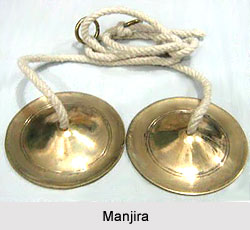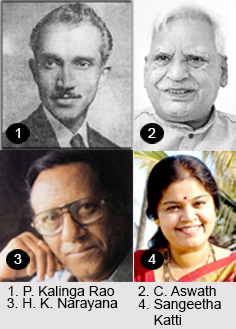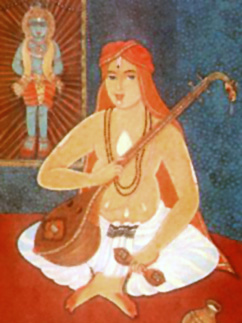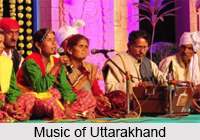The basic tools and techniques of vistar are defined by the articulation of swar. Articulation of swar creates and develops ornamentation to a raaga presentation. Among all the basic tools and techniques of vistar, the primary one is gamaka.
In Sanskrit, gamaka means "ornamented note". So, gamaka basically means ornamentation which is used in the performance of Indian classical music. It involves the variation of pitch of a note, using heavy forceful oscillations between adjacent and distant notes. The unique character of each raga is given by its gamakas, making their role essential rather than decorative in Indian music. Each raga has specific rules on the types of gamakas that might be applied to specific notes, and the types that may not.
Gamaka is created when a short vibrating sound is produced with brief oscillating movements with the given swar as its mid point of the vibrations. The degree and intensity of these vibrations or the oscillating movements is left to the discretion of the musician. Gamaka is considered to be the most challenging as well as the most important ornamentation technique in Hindustani vocal music. It has been referred to it in the old scriptures as the Alankara of music. Shrang Deva has classified gamaka into three categories based upon speed, three varieties according to voice qualities and another three varieties according to the application during aroha and avaroha of a raaga.
Usage of various forms of gamaka during a raaga presentation is a very different art to master. However, due to the superior ornamentation it provides improvisation, it is also very popular among performers of all genres of Hindustani music.
Types of Gamaka
There are two basic types of gamakas that have been illustrated below:
Hindustani Music Gamakas
Hindustani music has five gamakas in modern time which includes aandolan, kampita, khatkaa or gadgadita or jamjamaa, murki and sfurita. In Hindustani music, the gamaka is similar to meend and andolan.
Carnatic Music Gamakas
Carnatic music has ten ornamentation classes, divided into three major groups including Jaaru/Ulasita, Gamaka and Janta. And the ten ornamentation classes are Irakka-jaru, Etra-jaru, Nokku, Odukkal, Kampita, Orikai, Ravai, Sphurita, Pratyahata, and Khandippu.




